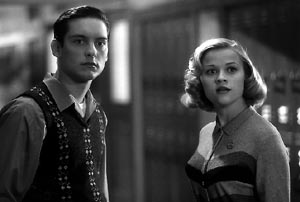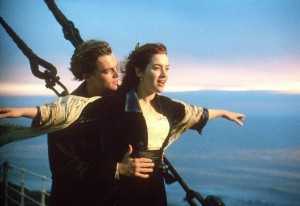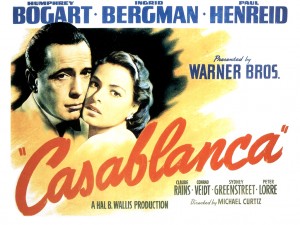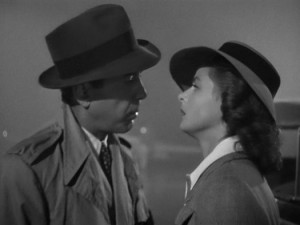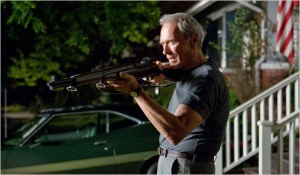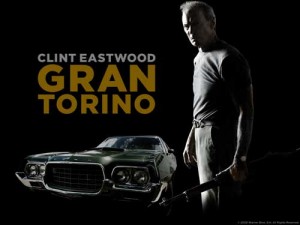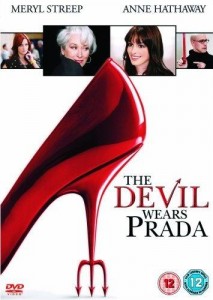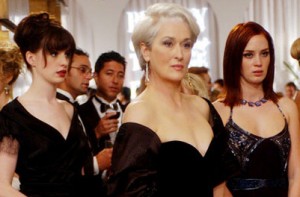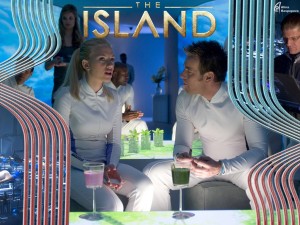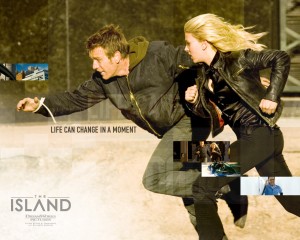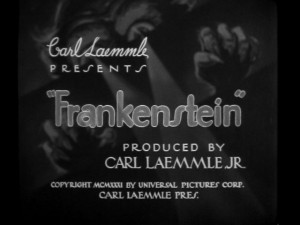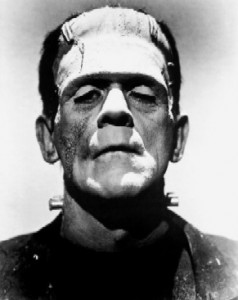The generic term character arc is something you might hear coming from your agent, at a story development meeting, or from your damn Columbia College part-time instructor. They can’t figure out what’s not clicking so out comes the cure-all: Your lead character hasn’t explored the full range of character arc. But what the hell does that mean?
It means the story isn’t working. Your critics might not have a precise answer for you, so you’ll have to interpret for yourself what’s wrong. Remember what Pinter said: “I listen to 10 people critique my work, then I do the 11th thing.” Unless it’s specific critique, hearing someone say your story is terrific but the characters are lacking can leave you scratching your head. Where do you take the rewrite if nobody can agree on direction?
Here’s my advice: Don’t over-complicate this. I’ve told you before there are no absolutes in screenwriting, but if there ever was one, it would be this: Characters gotta change. Most movies are journeys of self-discovery. The distance from A to Z, the beginning of the movie to the end.
Examine your lead characters. Examine their journeys, their arcs. How has the protagonist changed? What’s been learned? Was the journey plausible? Essential? Inevitable? The Mamet model for 3-Act structure always works for me: ORDER- CHAOS- REORDER.
Let’s look at some great character arcs in this 3-Act model. See how completely they change during the course of a 90-minute movie. Maybe it will help you in your own struggle to find a complete journey for your character.
- Pleasantville
ORDER
Toby McGuire is a high-school loser who loves the TV show Pleasantville. Reese Witherspoon is his slutty sister, a lot more popular at school for obvious reasons. Mom is all messed up with a divorce. Their home life doesn’t feel like a home life–it’s cynical, complicated, modern. Enter Don Knotts…
CHAOS
Through a remote control, he sends Toby and Reese into the television world of Pleasantville. It’s a 50’s world, black and white, and NOT complicated. Toby and Reese are stranded. When Reese sleeps with the captain of the basketball team, the first blanch of color emerges. The black and white world is destined when the natives start questioning what’s outside of Pleasantville. Oh, and start turning “colored”. This leads to a sort of racist persecution of the “coloreds”. Toby’s TV family is ripped apart.
REORDER
Through a trial, Toby triumphs. Even the Mayor pops out in colors. The Pleasantville black and white world is gone. Reese is no longer the slutty sister, deciding to stay in Pleasantville to attend college. Toby leaves his TV mom behind to help salvage his real-world mom and his life back home. The characters, the Pleasantville world, and the real world, are fundamentally changed in 124 minutes.
- Titanic
ORDER:
Kate Winslet plays Rose, a kinda-sorta snobby daughter of a really snobby mom whose lifestyle is in jeopardy. She marrying Kate off to a rich Wall Street asshole. Kate’s not happy about but what’s she gonna do, it’s 1912. They’re crossing the Atlantic on the Titanic where Kate will undoubtedly have well-off but miserable life. Leo De Caprio plays Jack, who wins his Titanic passage through a gambling bet, hanging with the other immigrant trash heading for Ellis Island, hoping for a slice of the American Dream.
CHAOS:
Rose meets Jack. He’s a painter, hung out in Paris, and he looks like Leo DC–what’s not to like? Rose prefers Jack’s company to her Wall Street asshole. She makes a decision to leave with Jack when the ship docks. Only…the ship hits an iceberg. Turns out the Titanic is going down and there’s nothing to stop it. Lots of folks are about to die.
REORDER:
The Wall Street asshole leaves Rose to Jack and jumps into a rowboat. Rose’s mom stays in her rowboat even when Rose jumps out to stay with Jack. Left to drown, they race to the back of the boat and attempt to survive. A giant door just happens to be passing by and Jack lifts Rose on it, basically sealing his own fate. Jack saves her, “in every way one person can save another”. Through photos we see Rose’s life revealed, her path and the world’s, forever changed by the sinking of the Titanic.
- Casablanca
ORDER:
Humphrey Bogart is Rick, an American ex-patriot in WWII Nazi-occupied Casablanca. He runs “Rick’s Café Américain”, a nightclub and gambling joint, bribes the local officials, minds his own business and makes a buck or two or three. He is NOT political, wisely keeping away from such foolishness, bad for business. He is hard-boiled, all about #1. Life’s been better but it could be a heckava lot worse. Then, “of all the gin joints in all the towns in all the world…”
CHAOS:
Ingrid Bergman, Elsa, enters. She and Rick had a thing in Paris back in the day but that’s all over now. Least it was… With her is her husband, Victor Lazlo, a charismatic Resistance leader. Lazlo is a dangerous man and the local Nazis are not amused by his appearance. Neither is Rick, whose joint gets closed down after Lazlo leads the crowd in a stirring version of La Marseillaise. Lazlo is everything Rick isn’t–selfless, sacrificing, fighting the good fight for other people in opposition of the Nazis. Rick just wants life to go back to normal, but then again there’s Ingrid Bergman, stirring up long lost feelings inside him. He and Elsa had a thing in Paris, you see…
REORDER:
Rick does something he would never have done at the top of the movie: Self-sacrifice. Putting Elsa and the Resistance ahead of his own pettiness, he gets the letters of transport for Elsa and Lazlo, killing the Nazi bad guy as he tries to stop him. When Louie tells the cops to “round up the usual suspects” it’s “the beginning of a beautiful relationship”. Rick walks away from his gambling joint and selfishness, now a part of the fight against the Nazis, changed for keeps.
- Gran Torino
ORDER:
Clint Eastwood is Walt Kowalski. He’s an ex-factory worker, recent widower, who just wants to live out his days in peace in his suburban Detroit house. When his estranged son recommends he move into a retirement community, he’s shown the door. Walt’s hates his own people, but he REALLY hates the Asians who have moved into his community and, he feels, destroyed it. Gang violence is everywhere. Walt is not a happy camper.
CHAOS:
When a Vietnamese family moves in next door, Walt saves the son from a gang with his M1 rifle. The gang swears revenge and the family, in gratitude, has the son do odd jobs for Walt. Gradually, respect grows between Walt and the kid. When his sister is kidnapped and raped by the gang, he goes to Walt asking for the gun to revenge his sister and his family’s honor.
REORDER:
Walt locks the kid in his basement, dresses in his military best, and heads to the gang house, armed with only a cigarette and lighter. Walt dies, but not before taking every gang member out with him. Blaze of glory. Giving his life up for this Vietnamese boy is something that would never, ever have happened at Point A of Walt’s story. At Point Z of the character arc, it feels not only believable, but inevitable.
- Devil Wears Prada
ORDER:
Andy Sachs (Anne Hathaway) is a recent Northwestern grad looking to pay off her $40,000 student debt. She interviews for Runway magazine and the notorious Amanda Priestly (Meryl Streep). More journalist than fashion-conscious diva, overweight as a size 8, she’s not so much laughed out of the interview as ignored. Leaving, she somehow gets chosen by Miranda despite her fashion ignorance.
CHAOS:
Andy is welcomed into the chaos of Miranda’s world. She learns about Jimmy Choo shoes, loses weight and looks great. She begins to neglect her friends and boyfriend. All that she mocked about Miranda’s world is synthesized by Andy–what she once mocked, she now becomes. There’s some industrial espionage, a trip to Paris, betrayal and twists. Andy loses her boyfriend and friends. At a crises of conscious, she loses touch with who she really is.
REORDER:
The industrial espionage works itself out. Miranda is still on top, ever powerful. Andy, now the trusted assistant, decides to throw it all away. She quits Miranda and Runway magazine. She makes amends with her ex-boyfriend, her ex-co worker, and, finds a new job outside of the fashion world. Pure journey of self-discovery, the “to hell and back” character arc couldn’t be clearer.
- The Island
ORDER:
Lincoln Six Echo (Ewan McGregor) and Jordan Two Delta (Scarlett Johansson) are meatsicles. They are genetically cultivated “insurance policies” born into the controlled environment of Overseers somewhere in the Arizona desert. They appear, feel, and yes, dream, but they aren’t human. They have never known the world outside of the Overseers, nor of any world outside of their own existence. They only dream of one thing: Being chosen to go to The Island.
CHAOS:
Lincoln Six Echo comes to consciousness. He is a curious cat and discovers through a disgruntled worker that there is a world outside of their little bubble. The Island doesn’t exist. Lincoln Six and Jordan Two crash out in the world at large. The overseers are not amused and take no prisoners. The worker who helped them is killed. A mercenary tracks them to the big city where they go to seek out their doubles. Here they learn that the Overseers are planning to kill all the contaminated insurance policies back at the bubble. Their escape, essentially, is a death sentence for all their friends.
REORDER:
Lincoln Six and Jordan Two head back to the bubble to save their friends. Two against an army? No matter. (It’s Michael Bay, after all). They waste the Overseers, liberating their fellow insurance policies into a brave new world. Meatsicle to consciousness, now that’s character arc!
- Frankenstein
ORDER:
Another meatsicle story is the classic 1931 Boris Karlov movie based on the famous Mary Shelly tale. Henry Frankenstein is an obsessed scientist running up the electric bills. His fiance worries and wonders what he does with his late nights down in the dungeon. Turns out he’s attempting to create life, hauling a dead body (with a criminal brain, alas!) upon the slab, running it through with current. One stormy night the experiment is a success. The Creature is alive, alive!
CHAOS:
The Creature goes through some growing pains. He strangles Fritz. Frankenstein barely escapes, locking his monster in the dungeon. Preparing a powerful drug to inject into the Creature, he knocks his associate down, almost killing Frankenstein before going unconscious. The Creature must be destroyed but it’s too late, he’s escaped. The Creature wanders the countryside, coming upon a farmer’s daughter. They playfully toss flowers into the pond and watch them float. The Creature playfully tosses the girl into the water but she can’t swim. His criminal brain (try to get the image of Marty Feldman out of your minds!) doesn’t understand it when she drowns to death.
REORDER:
The town peasants find out about the Creature and dead girl. Torches are lit and up they march to castle Frankenstein. Trying to talk them out of it doesn’t work. Frankenstein encounters the Creature, is knocked out, and taken to an old mill with him. He is thrown to his death by the monster but saved by the vanes of a windmill. The peasants burn the mill down with the Creature inside. Dr. Frankenstein survives, probably moving on to a University teaching gig, tenure, benefits, publishing the occasional scientific paper and his wife’s strudel, but never again God-like enterprises.




